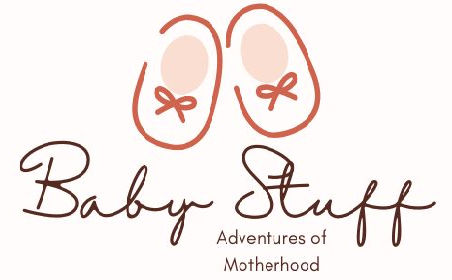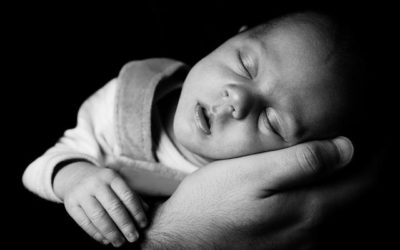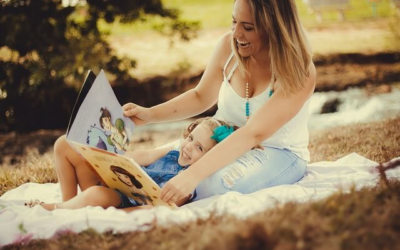Newborns are most vulnerable c to diseases and attacks of viruses and bacteria. No matter how carefully you stay about the child, there are some diseases that you cannot avoid. These diseases include ARDS.
This is a situation that occurs in infants that disturbs their breathing pattern. It is commonly evident in premature babies and in babies whose lungs are partially or undeveloped. The younger the baby is, the more he is likely to see adventure.
If you are willing to know everything about ARDS, you are at the right place. This guide aims to explore striking aspects even in intense infant respiratory distress syndrome.
What is ARDS?
Infant respiratory distress syndrome is a newborn condition that occurs when the baby’s lungs are undeveloped optimally. It is a condition in which a harmful amount of fluid gathers in your lungs and disturbs your breathing.
It notably reduces the amount of oxygen entering the body’s bloodstream and organs. However, infant respiratory syndrome is a life-threatening condition that requires instant medical assistance.

This condition is known as hyaline membrane disease and surfactant deficiency chronic lung disease. However, the major symptoms include rapid breathing or collapsed lungs. The newborns with this condition and earlier birth than 34 weeks require medical assistance to fulfill the requirement of oxygen in the body.
What are the Causes of ARDS?
There are multiple reasons that can trigger infant respiratory distress syndrome. Among all, here are some common reasons that can primarily trigger ARDS in infants:
Absence or undeveloped natural lung
It is the primary result of the missing healthy natural lungs moisturizing fluid in the new immature lungs of a newborn baby. The surfactant is a wetting agent and generally produces late in prenatal life because this agent is not necessarily present in the early age of around 26 to 36 weeks.
However, a shortage of this fluid in a newborn baby’s lungs can lead to improper working of the human alveoli, leading to breathing difficulty and damage.
Surfactant protein-B deficiency
It is an unconventional type of NRDS that occurred due to an unusual and expected pulmonary surfactant B gene. It is a kind of breathing problem in infants that sometimes follow the autosomal recessive inheritance.
This agent is responsible for coating the small air sacs present in the lungs to prevent massive damage. The air sacs of the lungs are supposed to open and let the oxygen enter the blood through the lungs. The absence severely impacts the overall health of the baby.
Recessive genetic disorders
Infant respiratory distress syndrome is mainly associated with premature babies and surfactant. However, in some cases, the NRDS affects the baby that is grown up and not a newborn. It also happens due to genes, for instance:
- Mother has diabetes
- Lungs are underdeveloped
- Baby is underweight
It comes down to genes and results in producers’ bodily conditions. When an individual receives defective genes for the same problem from both parents, it is known as a recessive genetic disorder. In case the individual is obtaining one normal and one healthy gene, he will be a carrier. However, the risk for two carrier parents results in 25% affected children. This combination is also enough for getting disturbing news.
Severe Respiratory Distress Syndrome Symptoms
The symptoms of this infant respiratory distress syndrome are dominantly notable. However, with the passage of time, it gets worse. It is generally characterized by diminished oxygen intake. Moreover, it also includes:
- A grunting sound while breathing
- Blue-colored fingers, lips, and toes
- Flaring nostrils
- Shallow breathing
When the surfactant is missing, breathing becomes difficult and often leads to the lungs collapsing. If you are not in the hospital at the time of delivery, check if the baby shows symptoms of severe respiratory distress syndrome.
If the symptoms are evident, take the baby to the hospital because he must be placed on ventilation and require other mechanical or physical assistance to continue breathing for survival.
Diagnosis
Generally, it is not diagnosable at home if the person does not know about this particular disease. Health care providers suspect RDS in premature babies who has difficulty breathing and requires oxygen as soon as possible after birth.

There are a number of tests available to diagnose the potential issue and dig out other possible causes. The diagnostic tests include:
- A chest X-ray to figure out unusual cloudy appearance on the lungs in newborn RDS.
- A blood test to determine the level of oxygen present in the baby’s blood and check for an infection.
- A thorough physical examination
A pulse oximetry test for the sake of measuring men’s oxygen level in the baby’s blood with the help of a sensor attached to their fingertip, toe, and ear.
Infant Respiratory Distress Syndrome Treatment
Acute respiratory distress syndrome treatment generally involves oxygen, medication, and fluid. However, the first and essential step in treating NRDS is to manage the oxygen level in the body.
Oxygen
Oxygen is the central element that needs to be maintained in the body for proper functioning. Babies require an extra amount of oxygen which is given in several ways, such as:
Continuous positive airway pressure: It is an artificial breathing machine that gradually delivers oxygen into the body to keep the air sac functional.
Nasal cannula: It is a small useful tube with prongs attached to it. It is attached to the nostril to maintain optimal oxygen level with nasal flaring.
Ventilator: it is applied for severe cases. This machine assists the infant to breath when the lungs are not working properly. For this purpose, the tube for breathing is put down in the baby’s windpipe. This process is known as intubation. Then the baby is placed on the ventilator for easy breathing.
Surfactant treatment
Sometimes the doctors give surfactants into the baby’s lungs to fulfill the requirement, which is not maintained naturally. It is generally offered straightforwardly down to the breathing tube that was put into the windpipe.
Medicine
At a minor level, medicines are enough to bring new babies born to a healthy life. Sometimes, antibiotics are prescribed if the infection is evident.
Intravenous Catheter Treatments
It is a minimal-sized tube which is known as a catheter. It is put into blood vessels present womb and in the umbilical cord. This method provides babies with fluids, optimal medicines, and nutrition. This method is also used to take samples.
Possible Complications of ARDS in Newborn
Most babies with neonatal respiratory distress syndrome can be effectively and successfully treated if healthcare providers diagnose the problem on time with a thorough examination. However, such babies born with disease are vulnerable to developing further problems in later life:
Air Leak
There is a condition known as pneumothorax. In this condition, the air can sometimes leak and trap in the baby’s chest cavity. The air places additional lung tissue pressure, which leads to collapsing and multiple breathing problems.
Infant respiratory distress syndrome is a deadly disease that can hinder the entire coming life of a person. However, this problem will be treated by putting the tube in the chest cavity allowing the air to release. It may be a painful process, but it helps me return to a normal and healthy life.
Internal Bleeding
Babies with this condition are expected to face bleeding inside their lungs and brains. It is known as pulmonary hemorrhage and cerebral hemorrhage. Anyhow the bleeding occurring in the lungs is treated with air pressure from the ventilator to stop bleeding and a blood transfusion.
The incident of cerebral hemorrhage is common in premature babies, but these bleeds are minor and mild and do not cause long-term problems. Anyhow, the current time can be quite painful.
Lung Scarring
Sometimes, the medication and breathing machine, such as the ventilator used to treat ARDS and optimal fetal lung development, can cause scarring in the affected babies’ lungs, which also disturbs optimal development. The scarring of the lungs is also known as bronchopulmonary dysplasia.
The symptoms of this condition are common such as shallow and rapid breathing as well as shortness of breath. The infant in severe condition may need additional oxygen with the help of tubes into their nose to help with breathing. It might take up to a few months to stop and get the lungs healed.
Anyhow the children with BPD have to take regular medicines. For instance, bronchodilators are responsible for broadening airways and making breathing easier.
Developmental Disabilities
Due to neonatal respiratory distress syndrome, if a baby’s brain gets damaged due to oxygen deficiency and bleeding. For instance, movement problems, breathing difficulties, and impaired vision and hearing.
Nonetheless, these developmental problems are generally minimal and not severe. According to a survey, every 3 children out of 4 have problems related to optimal development at a minimal level which does not stop them from living a normal and healthy life.
Prevention
You cannot prevent the emergence of a problem. Moreover, there is no particular proven way to prevent ARDS entirely. However, these preventions can help prevent the situation from getting worse at gestational age.
- Get medical care instantly.
- Avoid secondhand smoke.
- Stay cautious about pneumonia and flu vaccines
Final Thoughts
Acute RDS is a condition that generally occurs in premature babies. it is also known as hyaline membrane disease. However, premature babies infants face difficulty breathing, but it can be treated with medications and other methods. The road to recovery and outcomes are different for every infant.
Sometimes the ARDS gets worse before getting better. Some premature infants require more oxygen than others. However, if the problem is diagnosed on time, it can be treated anyhow.
FAQs
How Is Respiratory Distress Syndrome Treated?
It is a health condition commonly seen in newborn babies or premature birth. If it is severe, it can affect severely, but at a lower level, it is treated by providing optimal oxygen levels. Sometimes, the medication is enough to get the baby back to a healthy life.
How to Understand if Your baby is Getting Better?
If your baby is dealing with respiratory distress syndrome and getting optimal treatment, here are some common signs of whether treatment is affecting the baby or not. It includes:
- Require less oxygen.
- Have decreased setting in case of using CPAP or ventilator.
- Breathe comfortably and gradually.
Also interesting to read:
- Newborn dry lips: Sign, Causes and Treatments
- EVERYTHING YOU MUST KNOW ABOUT CAN NEWBORNS GET COVID
- How To Clean Baby Ears
- Tips To Get Better At Burping a Newborn That Won’t Burp
- Baby Born Deformed: What are the Main Types of Birth Defects?
- Dog Acting Out after Baby Arrival: A Complete Guide
- One month old baby milestones, development, feeding & activities
- How to Help Your Newborn with Congestion?
- From Crawling to Climbing: Day Care Baby Games
- Bringing Newborn Baby Home from the Hospital





